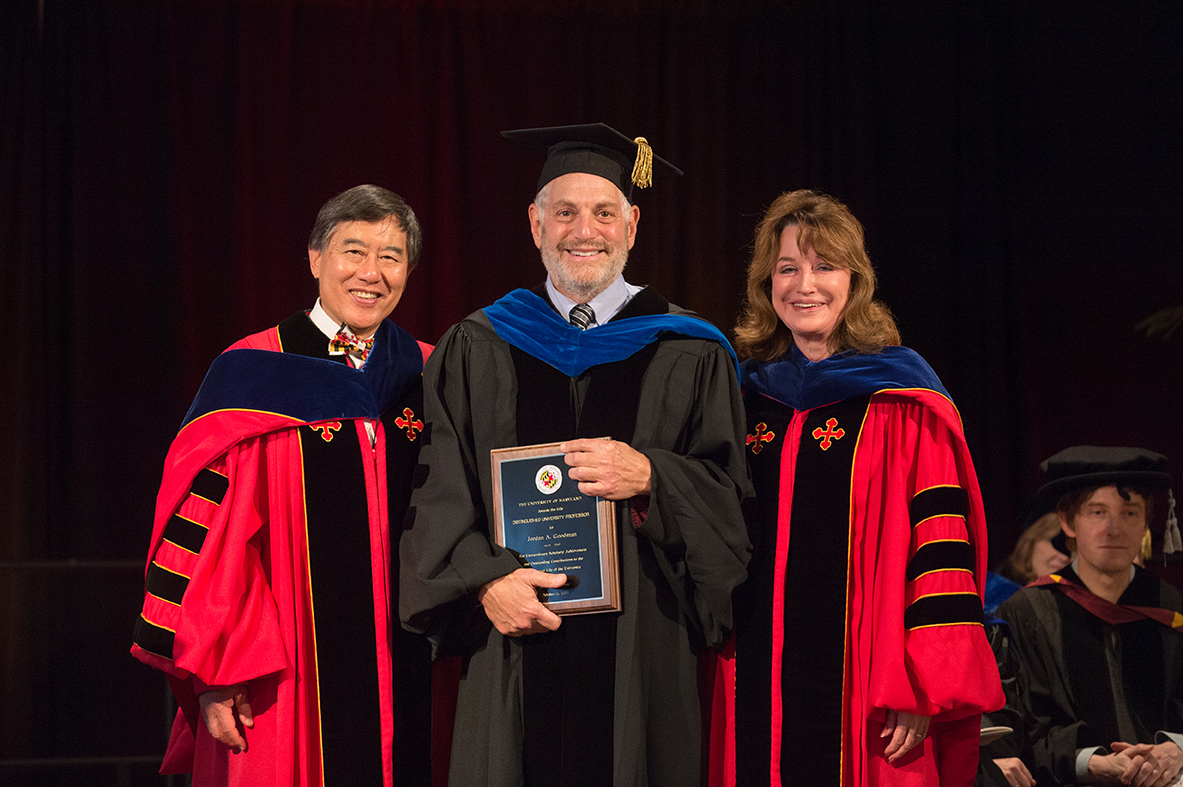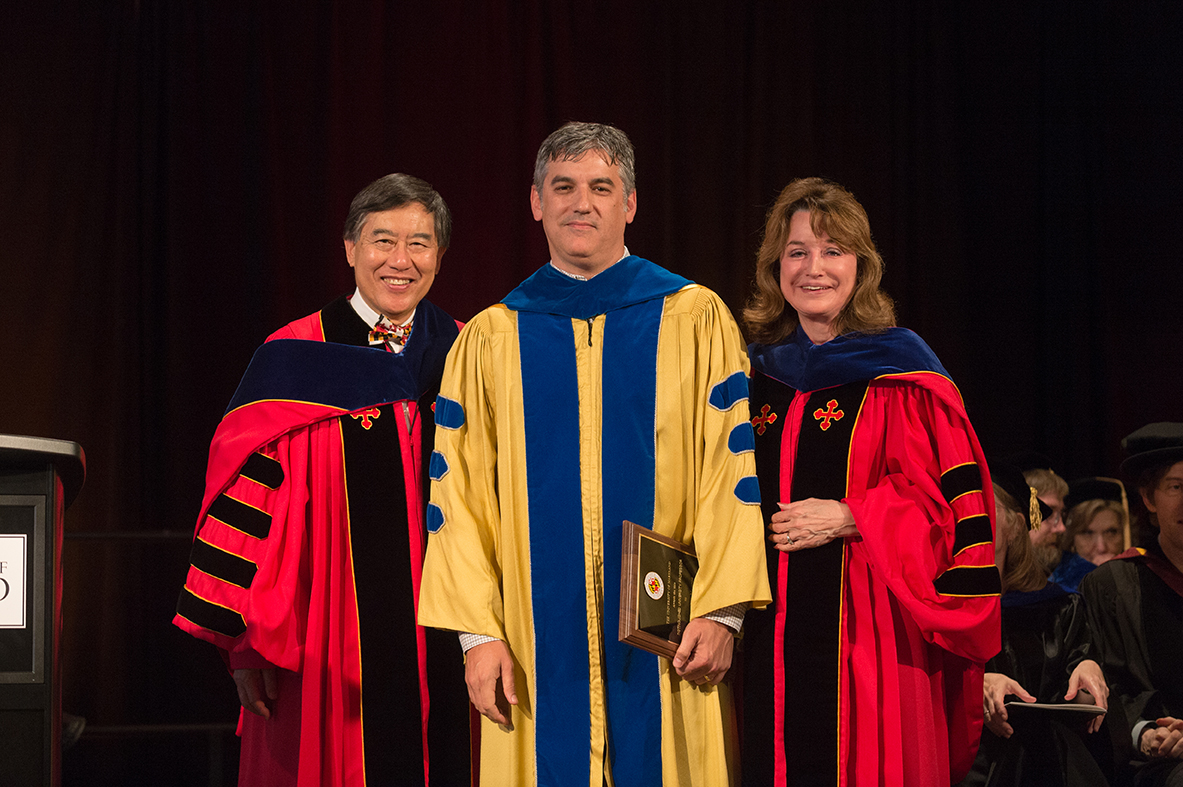UMD physicists share 2016 Breakthrough Prize
- Details
- Published: Monday, November 16 2015 16:44
UMD Research Scientist Erik Blaufuss, Distinguished University Professor Jordan Goodman and Professor Greg Sullivan will be sharing the 2016 Breakthrough Prize in Fundamental Physics award for their studies in neutrino oscillations. The $3 million prize will be shared equally among five experiments comprised of more than 1,300 physicists;Daya Bay, KamLAND, K2k/T2K,Sudbury Neutrino Observatory and Super-Kamiokande.
The University of Maryland physicists were part of the team of scientists that built and participated on the Super-Kamiokande experiment (for which Takaaki Kajita shared the 2015 Nobel Prize in Physics).The team’s experimental data demonstrated that neutrinos change identities. This metamorphosis requires that neutrinos have mass. The discovery has changed our understanding of the innermost workings of matter and can prove crucial to our view of the universe.
The Breakthrough Prizes were established by Yuri Milner, Julia Milner, Sergey Brin, Anne Wojcicki, Mark Zuckerberg, Priscilla Chan, Jack Ma, and Cathy Zhang. Their goal is to bring important figures of the science and technology communities into the public eye.


